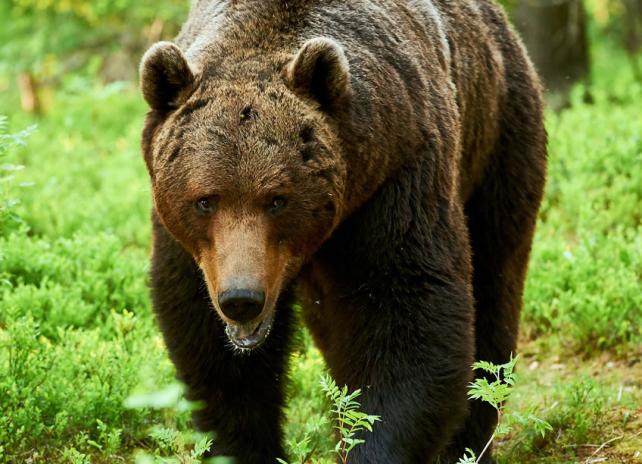
How to React in an Encounter
Being able to identify different behaviors can help you stay safe in bear country and know how to react if you ever encounter a predatory or defensive bear.
How to react to the bear's behavior
In most situations, bears will avoid humans.
If you encounter a bear that does NOT avoid you, you need to determine if it is exhibiting predatory or aggressive/defensive behavior. These behaviors and how you react to them are true for both black and grizzly bears.
Defensive Behavior
Do not challenge the bear with aggressive body language or direct eye contact. NEVER run away from the bear. If the bear begins to approach, stand your ground and use bear spray if available. If a bear makes contact drop and cover by lying flat on your stomach, inter-lacing your fingers, and placing them on the back of your neck. Do not fight back - once the bear feels the threat is neutralized it will stop attacking.
Predatory Behavior
Make yourself look as big as possible. Do not back away from the bear - stand your ground. Act aggressively towards the bear by using branches or rocks to deter the bear while yelling in a loud and firm voice. Use bear spray or a weapon to protect yourself.
Signs of defensive bears
If you encounter a bear acting defensive, you can expect to see any or all of the following behaviors.
Signs of predatory bears
If you encounter a bear acting predatory, you can expect to see any or all of the following behaviors.
Bear spray
Bear spray is an effective deterrent that is designed specifically to deter aggressive or charging bears, but is not a substitute for following appropriate safety precautions.
The main active ingredient is capsaicin (capsaicinoids), which is derived from chili peppers. Bear spray, when properly used, gets into mucus membranes and causes a burning sensation that deters bears. Make sure that you are carrying an EPA-registered Bear Spray and not another form of self-protection pepper spray, which does not shoot out as far or have a high enough concentration of capsaicinoids.
- Bear spray is to be used on a charging bear or in an aggressive encounter.
- It sprays out 25-30 feet and creates a 4-foot cloud.
- Each member of the party should carry bear spray.
- Bear Spray must be carried where it is readily accessible.
- Make sure the spray is in working order and that it has not expired (labels are dated)
- It should NOT be used as a repellent, or put on tents, gear, etc.
